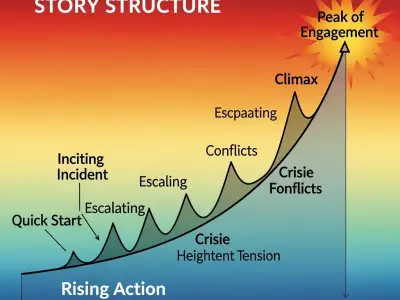Many authors will tell you that, besides your amazing story idea, deadlines and goal setting are two of the most important tools in writing children's books. Take it from Paul Barry, who set himself a challenge during lockdown to write one successful children’s book. Instead, he wrote two!
A Premier League Academy Football Coach by day, Paul knows a thing or two about goal setting and staying motivated. Paul told Centre of Excellence that he is “someone who is always trying to develop” and better himself.
Writing Children's Books: Goal Setting
The Essex resident added, “Achievable goals are very important to me as they give me a time-frame to work towards and this, in my opinion, is ideal to motivate you to accomplish your objectives.”

Like many authors, books have been a lifelong passion for Paul. The dad-of-two told Centre of Excellence, “Having young daughters who love bedtime stories really ignited my desire to create my own children’s picture book.”
He has always had aspirations to become a children’s author since he was a child himself, often considering what it would take to make this aspiration a reality and publish successful children’s books.
Despite its difficulties, lockdown also provided Paul with an opportunity. “Like most other people, I was forced to start working from home and found myself with more time than I would usually have been afforded,” Paul recalled. He began jotting down ideas for his first-ever children’s book in March 2020. Armed with these initial scribblings and rhyming couplets, he enrolled on the Centre of Excellence Writing Books for Children Diploma Course a few months later.

Fully committed to his learning journey, Paul set himself the writing goal of completing one module each month. Of the course, he said, “The early module assessments were more multiple-choice and quiz-based, which I found fairly straightforward.”
With his building confidence, Paul decided to set himself the goal of completing the course and releasing a picture book in just one year — a deadline of May 2021.
Writing Children's Books: Story Development
At this point, Paul was able to hone his story development skills as “the later module assessments were far more challenging and I would have to write anything from a 1000 to a 2000-word story with, on occasion, only a picture for inspiration.”

But Paul persevered. Believing the longest journeys start with the smallest of steps, he would write little and often, sitting down rarely for more than 30 minutes at a time, pushing himself and achieving up to 500 words with each session.
Through the course, Paul said, he learned more with each passing module — and even drafted six story ideas. While his passion is rhyming picture books, he said the assessments “really challenged my thinking and creativity” by also encompassing genres in creative writing such as fantasy, mystery, horror and comedy.
Writing Children's Books: Understanding Genre
He added, “I became much more confident in using descriptive language, building tension and character arcs, and this certainly helped me to write with imagination and a sense of expression in my picture books.”
After all, the key ingredients to writing apply to all genres if you wish to entertain and inspire your readers in your novel writing and stories. But it was the colourful and imaginative characters, the bright and vivid illustrations, as well as the life-changing morals that drew Paul to his chosen craft.

Paul, who is inspired by other authors such as Julia Donaldson, Rob Biddulph and Rachel Bright, also did his research.
Writing Children's Books: Creating Character
Knowing he wanted to create colourful and relatable characters, he discovered that children most enjoy reading about animals. He added, “I wanted to bring my characters to life with humanised qualities and real-life ambitions, but at the same time, experience difficult and challenging moments in which to overcome.”
“The actual writing of the stories was probably the easiest bit!” Paul told us, adding, “I got into a real sense of flow with the storylines already firmly established in my head and the rhymes seeming to come quite naturally to me.”
He also credits building really useful connections with a couple of authors, including crime and thriller writers Michael Wood and Alex Lake, on social media, one of whom was kind enough to critique his early work and give Paul some brilliant advice on plot structure, scanning and making the rhymes flow well from one to the next.

Of his six drafts, and several characters already taking shape on the page, the story which resonated the most with Paul and his two daughters was one about a frog named Terry with a passion for tap-dancing. Thus, Paul decided this would be the story he’d publish first. He titled it Keep the Tap On.
With what most consider the hard part over, Paul set to work compiling a detailed storyboard featuring his writing as well as illustration and margin notes, working with a fantastic illustrator for about a month to bring his spreads to life. It was, Paul admits, an “intricate and at times, quite painstaking” process.
Writing Children's Books: Getting Published
After finding support and advice from the fellow writers of successful children’s books, Keith Mayer and his son, David, who wrote the best-selling book Gold Dust, Paul had also decided he would self-publish through Amazon as well as approach publishers to ensure his story ideas came to life on the page. Keith also advocated for Fiverr, where Paul sourced a formatter and within a week or so, had his e-book and paperback version ready to upload to Amazon.

In just a week, Paul was holding his very own children’s picture book in his hands. He said, “It was an extremely proud moment to read the story to my daughters for the first time.”
“The course was going really well and it seemed that it was not only achievable and realistic to try to release one story, but it might be possible to, in fact, publish two,” Paul said, explaining his decision to change his goal, spurred on by his six draft story ideas facilitated by the course. He added, “I thrive on challenges and, when I realised that I was soon to finish the course and Keep the Tap On was already released and selling well, I wanted to increase the challenge still further.”
Paul had published Keep the Tap On in January 2020 and with his second story — the tale of a monkey called Chase who is afraid to swing from trees — near enough ready to go, he felt it made sense to follow it with another. So, in March 2020, two months before the goal date for Paul to release just one of his successful children’s books, he released his second, titled Swing Your Heart Out.

Of his characters, Paul kept his inspiration simple. “I decided to choose a frog and a monkey for my first two stories simply because they are animals that I love!”
The challenge most writers will empathise with, Paul said, was devising “a motivation and passion sought by the character, a difficult obstacle to conquer, followed by a resolution and then the life lesson learnt by the character and, ultimately, the reader.”
Needless to say, Paul got his diploma with flying colours.

But perhaps a more noteworthy seal of approval came from his readers themselves.
“Both of my books have been really well received by children and adults alike.” After a couple of weeks, Swing Your Heart Out ranked number one on the Amazon top 100 hot new releases for children’s short stories. Paul told Centre of Excellence that it’s an accolade he is incredibly proud of.
Despite this achievement, Paul hasn’t finished his learning journey just yet. He recently started a diploma in Child Psychology, which will no doubt help him to understand his readers and go on to create more beautiful and successful stories as he continues with writing children's books.

He might make it sound easy but many aspiring writers will know that sitting down to a blank page with the potential to transform it into reams and reams of inspiring words can be a daunting task, especially when it is just you and your ideas you have to work with.
Perhaps, because it is such a challenge, the incredible fulfilment you will feel when you hold your book in your hands, just like Paul, is unlike any other.
When you're writing children's books, just remember to write your heart out and keep the tap on to let those words flow!
At the time of publishing, entering the code LEARNING in the checkout will reduce the price of our
Writing Books for Children Diploma Course to just £29.




